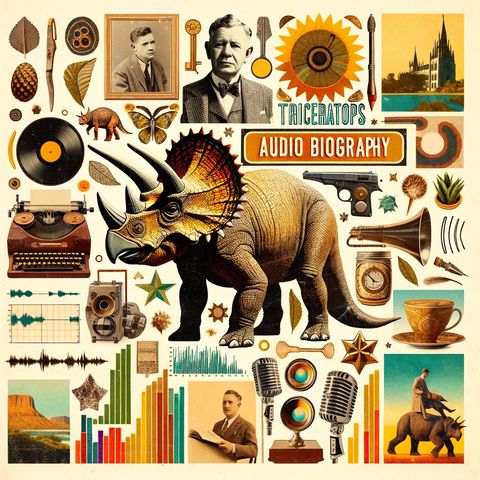20 OTT 2024 · Triceratops, the iconic three-horned dinosaur, roamed the Earth during the late Cretaceous period, approximately 68 to 66 million years ago. This majestic herbivore, whose name means "three-horned face" in Greek, was one of the last non-avian dinosaurs to exist before the mass extinction event that marked the end of the Mesozoic era.
Standing at an impressive height of up to 10 feet and measuring up to 30 feet in length, Triceratops was a formidable presence in its prehistoric ecosystem. Its most distinctive feature was undoubtedly its massive skull, which could grow to be over 8 feet long – nearly one-third of the animal's total body length. This enormous head was adorned with three horns: two large ones above the eyes and a smaller one on the snout. These horns, composed of keratin – the same material found in human fingernails – served multiple purposes, from defense against predators to visual displays during mating rituals.
Perhaps equally famous as its horns was the Triceratops' large bony frill, a shield-like structure that extended from the back of its skull. This frill, while impressive in appearance, was actually quite thin and likely served more as a display feature than a defensive mechanism. Scientists believe it may have been used for species recognition, thermoregulation, or as a canvas for vibrant colors to attract mates – much like the elaborate plumage of modern-day birds.
Triceratops inhabited what is now North America, with fossils primarily found in Montana, South Dakota, Colorado, and Wyoming. These areas were once part of an ancient coastal plain, teeming with lush vegetation that provided ample food for these massive herbivores. Their strong beaks and rows of teeth were perfectly adapted for slicing through tough plant material, allowing them to feed on low-growing vegetation such as ferns, cycads, and palm-like plants.
Despite its intimidating appearance, Triceratops was prey to the apex predator of its time – Tyrannosaurus rex. Fossil evidence suggests that these two titans often clashed, with some Triceratops bones bearing marks consistent with T. rex teeth. However, the Triceratops was far from defenseless. Its horns and frill, combined with its impressive size and strength, made it a formidable opponent even for the "king of the tyrant lizards."
Triceratops lived in herds, providing safety in numbers against predators and allowing for complex social interactions. Like modern-day elephants, they likely had strong family bonds and may have cared for their young in nurturing groups. Paleontologists have discovered fossilized nesting grounds, suggesting that Triceratops laid eggs and potentially exhibited parental care, guarding their nests and protecting their offspring until they were old enough to fend for themselves.
The discovery of Triceratops fossils has a rich history dating back to the late 19th century. The first known Triceratops remains were found in 1887 near Denver, Colorado, by George Lyman Cannon. Initially mistaken for an extinct species of bison, it wasn't until 1889 that paleontologist Othniel Charles Marsh officially named and described the genus Triceratops.
Since then, numerous Triceratops fossils have been unearthed, making it one of the best-understood dinosaurs in the fossil record. This wealth of specimens has allowed scientists to identify several species within the genus, with Triceratops horridus and Triceratops prorsus being the most well-known.
The enduring popularity of Triceratops extends far beyond the scientific community. Its distinctive appearance has captured the public imagination, making it a staple in popular culture, from children's toys to blockbuster movies. This fascination has helped spark interest in paleontology and prehistoric life among generations of budding scientists and dinosaur enthusiasts.
As we continue to unearth new fossils and employ advanced technologies in paleontological research, our understanding of Triceratops and its world continues to evolve. Each discovery provides new insights into the biology, behavior, and ecology of this magnificent creature, allowing us to paint an ever more vivid picture of life in the late Cretaceous period. The story of Triceratops serves as a testament to the incredible diversity and resilience of life on Earth, reminding us of the vast expanse of time that came before us and the countless wonders that lie buried beneath our feet.
This is a Quiet Please production for more go to http://www.quietperiodplease.com
Check out these Dino Deals https://amzn.to/4dSqNXR


